Crafts to Teach Kids about the Importance of Earth Day
Earth Day is a special occasion that reminds us of the vital role our planet plays in our lives. It's a day to celebrate nature, promote sustainability, and teach the younger generation about the importance of taking care of our environment. Engaging children in hands-on activities not only makes learning fun but also instills a sense of responsibility towards our Earth. By incorporating crafts into Earth Day celebrations, we can spark creativity while educating kids about environmental issues. So, let’s dive into some exciting crafts that will help kids understand the significance of Earth Day!
One of the most impactful ways to teach children about sustainability is through recycled art projects. These projects utilize materials that would otherwise end up in the trash, allowing kids to grasp the concept of reusing and recycling. Imagine turning a simple plastic bottle into a beautiful flower vase or transforming old newspapers into colorful collages! Not only do these activities foster creativity, but they also reduce waste and promote environmental consciousness. By using items like cardboard, plastic, and fabric scraps, children learn that creativity knows no bounds and that every little bit counts when it comes to protecting our planet.
Creating nature collages is another fantastic way to engage kids with the outdoors. This activity encourages them to explore their surroundings, collect natural materials like leaves, flowers, and twigs, and create stunning artwork. As they gather these items, children begin to appreciate the beauty of nature and understand the importance of preserving it. A nature collage can be a vibrant tapestry of colors and textures, showcasing the diversity of the environment. Plus, it’s an excellent opportunity for kids to learn about different plant species and their ecological roles.
One of the most enjoyable techniques in nature collages is leaf printing. This method involves using leaves to create impressions on paper, allowing kids to explore various leaf shapes and textures. Through this process, they not only learn about different types of leaves but also discover their ecological significance. Each print tells a story of the plant’s life cycle and its contribution to the ecosystem. Imagine the excitement on a child’s face as they see the unique patterns formed by nature!
Collecting leaves for printing is an engaging way for children to connect with nature directly. As they venture outside, they can learn to identify various species by their shapes, colors, and sizes. This hands-on experience fosters a deeper appreciation for the diversity of plant life. To make it even more educational, you could create a simple chart to help them categorize the leaves they find. For example:
| Leaf Type | Color | Size |
|---|---|---|
| Maple | Green | Medium |
| Oak | Dark Green | Large |
| Birch | Yellow | Small |
Another engaging activity is making leaf rubbings. This simple craft enhances fine motor skills while promoting environmental awareness. Kids can place a leaf under a sheet of paper and rub a crayon or pencil over it to reveal the intricate details of the leaf’s veins and texture. It’s like having a piece of nature right in their hands! Plus, it’s a great way for them to express their creativity while learning about the unique characteristics of different plants.
Have you ever heard of seed bombs? Making these little green nuggets is an exciting way for kids to contribute to their environment. It’s a hands-on activity that teaches them about the importance of planting and biodiversity. Using a mixture of clay, compost, and seeds, children can create their own seed bombs, which they can later toss into their gardens or local green spaces. This not only encourages gardening but also fosters a sense of stewardship towards nature.
Creating upcycled planters from old containers is another fantastic craft that promotes the idea of repurposing. Kids can use anything from tin cans to plastic bottles to create unique planters for their favorite flowers or herbs. This activity teaches them about gardening and the essential role plants play in maintaining a healthy ecosystem. It’s a practical way to show them that even items that seem useless can have a second life!
Decorating upcycled planters allows children to express their creativity while learning about the benefits of plants. They can paint, glue on decorations, or even use natural materials to embellish their creations. This not only fosters a sense of ownership but also encourages them to take responsibility for their green creations. Watching their plants grow will give them a sense of accomplishment and connection to nature.
Finally, teaching kids about plant care basics through their upcycled planters instills a sense of responsibility. They learn the importance of nurturing living things and the environment. Regular watering, providing sunlight, and understanding the needs of their plants will help them develop empathy towards nature. It’s a beautiful cycle of learning that connects them with the Earth on a deeper level.
- What age group is suitable for these crafts? These crafts are ideal for children aged 5 and up, but younger kids can participate with adult supervision.
- Do I need special materials for these projects? Most materials can be found at home or in nature, making these crafts accessible and eco-friendly.
- How do these activities promote environmental awareness? By engaging in hands-on projects, children learn about recycling, nature, and the importance of caring for the planet in a fun and interactive way.
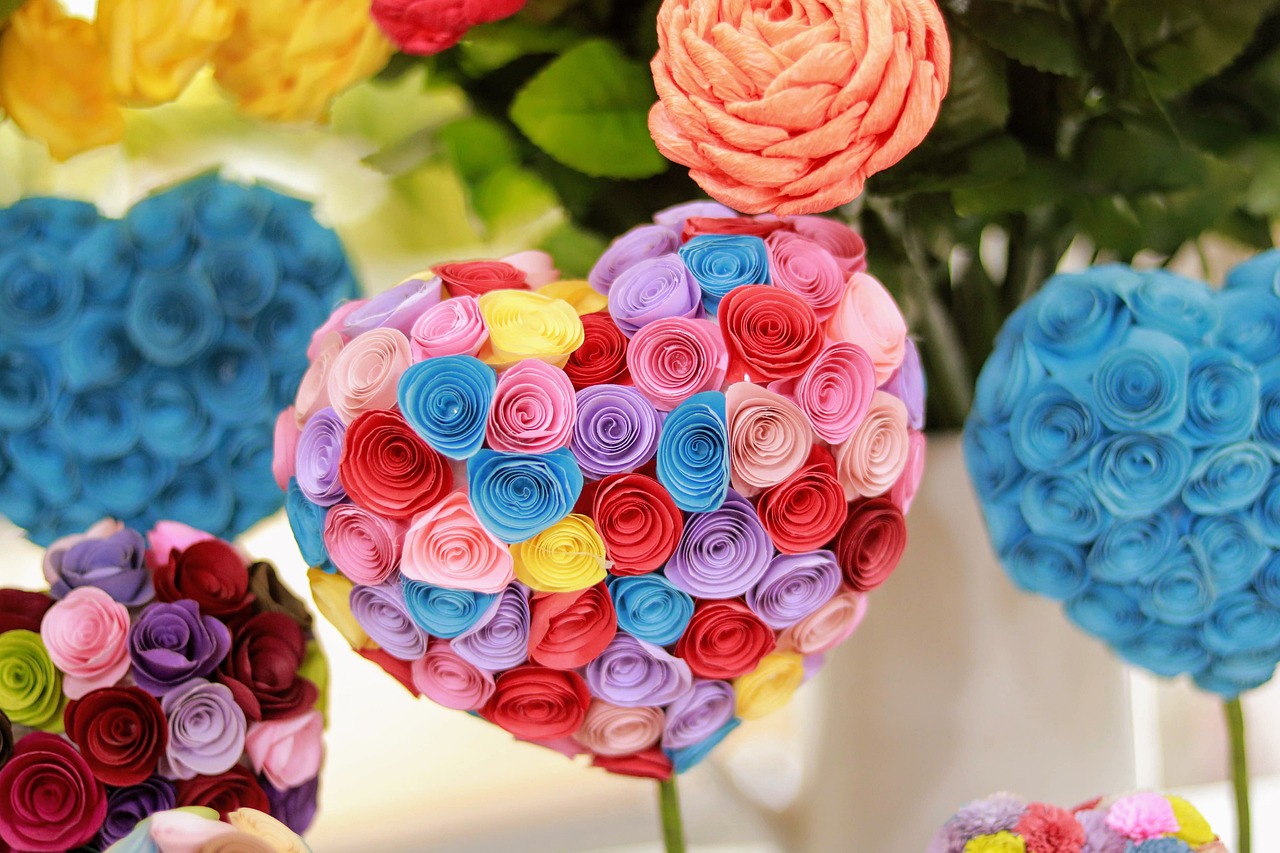
Recycled Art Projects
Recycled art projects are not just a fun way for kids to get their hands dirty; they serve a crucial educational purpose. By utilizing materials that would otherwise end up in the landfill, children learn the significance of reusing and recycling. Imagine transforming an old cereal box into a vibrant piece of art! This not only sparks creativity but also instills a sense of responsibility for the environment. Kids can gather items from around the house, such as plastic bottles, cardboard, and scrap paper, and let their imaginations run wild.
One engaging project could be creating a recycled sculpture. Kids can use various materials to build something unique, whether it's a robot made from tin cans or a flower garden crafted from plastic lids. This hands-on experience allows them to see the potential in items they might have previously considered trash. The beauty of recycled art lies in its limitless possibilities and the lessons it imparts about sustainability.
To facilitate this creative process, you might consider setting up a recycling station at home or in the classroom. This station can include a variety of materials, organized into categories such as:
| Material Type | Examples |
|---|---|
| Paper Products | Cereal boxes, old magazines, wrapping paper |
| Plastic Items | Water bottles, yogurt containers, plastic lids |
| Textiles | Old clothes, fabric scraps, yarn |
| Metal | Tin cans, aluminum foil, bottle caps |
By organizing materials this way, children can easily access what they need for their projects. As they create, encourage them to think about the story behind each item. For example, where did that bottle come from? What was its original purpose? This reflection can deepen their understanding of waste and resourcefulness.
Moreover, recycled art projects can also be a great way to collaborate with friends or family. Working together on a piece can foster teamwork and communication skills. You could even host a mini art show at the end of the project, where each child can display their creation and explain what materials they used and why. This not only boosts their confidence but also reinforces the idea that art can come from anywhere, especially from things we often overlook.
In summary, engaging kids in recycled art projects is a fantastic way to teach them about environmental responsibility while allowing their creativity to shine. The next time you’re about to toss something in the trash, pause for a moment. It might just be the perfect ingredient for your child's next masterpiece!
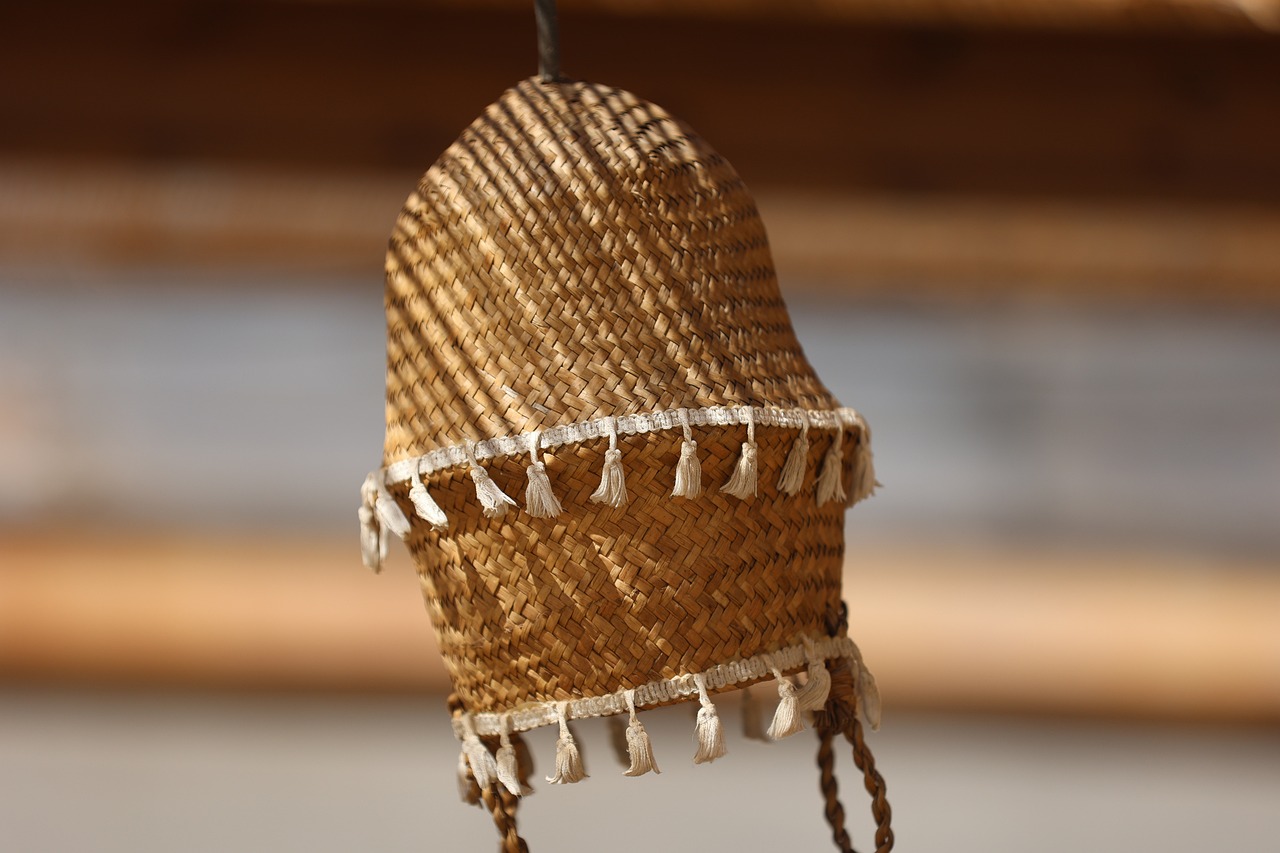
Nature Collages
Creating is a fantastic way to engage kids with the beauty of the outdoors while also teaching them about the importance of preserving our environment. Imagine taking a stroll through a park, gathering colorful leaves, vibrant flowers, and interesting twigs, only to transform these treasures into a stunning piece of art! This hands-on activity not only sparks creativity but also encourages children to appreciate the natural world around them. As they collect materials, they learn to observe the intricate details of nature, fostering a deeper connection with the environment.
To start, you can take your little ones on an adventure outside to gather materials for their collages. Here are some ideas of what to look for:
- Different types of leaves (maple, oak, etc.)
- Flowers in various colors and shapes
- Sticks and twigs for structure
- Seeds or pinecones for added texture
Once you have your collection, the real fun begins! Kids can arrange their finds on a piece of cardboard or thick paper, experimenting with layouts and designs. This process allows them to unleash their creativity and think about how each piece contributes to the overall composition. Encourage them to tell a story with their collage; perhaps it represents a favorite park, a season, or even a magical forest! The possibilities are endless.
Moreover, while working on their collages, children can learn about the different materials they are using. For instance, they can discuss the types of trees the leaves come from, the role of flowers in ecosystems, and how plants and animals interact in their habitats. This not only makes the activity educational but also instills a sense of responsibility towards the environment.
After the collages are complete, you can display them proudly around your home or even organize a mini exhibition for family and friends. This gives kids a sense of achievement and reinforces the idea that their creativity can help raise awareness about nature conservation. Plus, it’s a great way to spark conversations about Earth Day and why we should cherish our planet.
In conclusion, nature collages are not just a fun craft; they are a meaningful way for kids to learn about the environment while expressing their artistic side. By connecting with nature and creating something beautiful, children can develop a lifelong appreciation for the world around them.
Q: What materials do we need for nature collages?
A: You will need a base like cardboard or thick paper, along with natural materials such as leaves, flowers, twigs, and seeds.
Q: Can we use materials from our yard?
A: Absolutely! Using materials from your yard is a great way to engage with your local environment and teach kids about the plants in your area.
Q: How can we preserve our collages?
A: You can preserve collages by applying a thin layer of Mod Podge or a similar adhesive to protect them from damage.
Q: What age group is this activity suitable for?
A: Nature collages can be enjoyed by children of all ages, but younger kids may need assistance with collecting materials and arranging them.
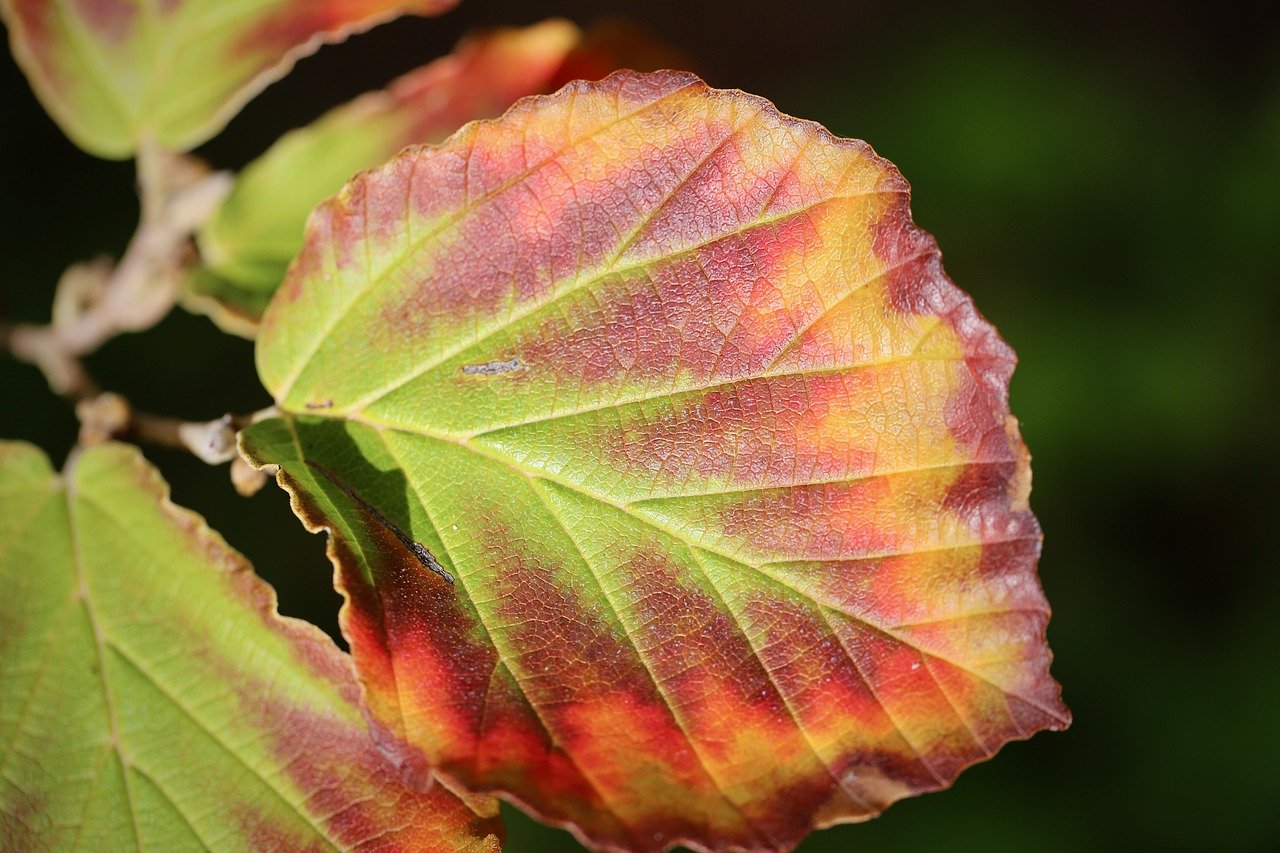
Leaf Prints
Leaf printing is not just an art project; it's a delightful journey into the world of nature that kids can embark on. Imagine the excitement on a child's face as they discover that the leaves they often overlook can transform into beautiful pieces of art! This technique involves using real leaves to create impressions on paper, allowing children to explore their creativity while learning about the different types of leaves and their ecological significance. It's like bringing a piece of the outdoors right into their hands, and it opens up a whole new appreciation for the environment.
To get started with leaf printing, all you need are some fresh leaves, paper, and a few simple tools. Kids can venture outside to collect leaves of various shapes and sizes, which not only makes the activity fun but also educational. While gathering leaves, they can learn to identify different species, noticing the unique textures and colors that each leaf offers. This hands-on experience encourages them to connect with nature, fostering a sense of curiosity and respect for the environment.
Once the leaves are collected, the real fun begins! Children can place the leaves under a sheet of paper and use a rolling pin or their hands to press down firmly. As they roll or press, they will see the leaf's veins and shape transfer onto the paper, creating stunning prints. This process can be likened to a magical reveal, where nature's artwork comes to life before their eyes. Not only does this activity enhance their fine motor skills, but it also teaches them about the intricate details of plant life. It's a wonderful way to blend art with science!
After creating their leaf prints, kids can take it a step further by using these prints in various craft projects. They can create greeting cards, bookmarks, or even frame their prints to display them proudly at home. This not only gives them a sense of accomplishment but also reinforces the idea of reusing materials creatively. By showcasing their artwork, children learn the value of nature and the importance of preserving it for future generations. So, why not gather some leaves and let the adventure begin? The world of leaf printing awaits!
- What types of leaves work best for printing? Generally, flat leaves with prominent veins, such as maple, oak, and fern leaves, work beautifully for printing.
- Can we use paint instead of just pressing the leaves? Absolutely! You can paint the leaves with non-toxic paint before pressing them onto the paper for a more colorful effect.
- What age group is this activity suitable for? Leaf printing is suitable for children of all ages, but younger kids may need some assistance with pressing the leaves.
- How can we preserve the leaf prints? Once dry, you can spray them with a clear sealant or frame them to protect the prints and showcase your child's artwork.

Collecting Leaves
Collecting leaves is not just a fun activity; it's an exciting adventure that opens the door to the wonders of nature! Imagine walking through a park or your backyard, the crisp air filling your lungs, and the vibrant colors of autumn leaves carpeting the ground. As kids embark on this treasure hunt, they not only gather leaves but also develop a deeper appreciation for the environment around them. This engaging process encourages them to observe and interact with their surroundings, making the experience both educational and enjoyable.
When collecting leaves, children can learn to identify various species, which is a fantastic way to enhance their knowledge of local flora. They might discover that each leaf has a unique shape, size, and color, reflecting the diversity of the ecosystem. To make the experience even more enriching, you can introduce them to the concept of leaf morphology. For instance, they can learn about:
- Simple Leaves: Leaves that are undivided, like those of the maple tree.
- Compound Leaves: Leaves that are divided into smaller leaflets, such as those from the walnut tree.
- Deciduous vs. Evergreen: Understanding which trees lose their leaves in the fall versus those that keep them year-round.
Encouraging children to collect leaves can also lead to discussions about the importance of trees in our environment. For example, you can talk about how trees provide oxygen, improve air quality, and offer habitats for countless species. As they gather leaves, children can reflect on the role these plants play in sustaining life on Earth. It’s a beautiful way to connect them with nature and instill a sense of responsibility towards preserving it.
To make the collection process even more engaging, consider creating a leaf journal where kids can press their leaves and document their findings. They can sketch the leaves, write down where they found them, and even note any interesting facts about the trees. This not only enhances their creativity but also reinforces their learning. Plus, it gives them a tangible keepsake of their adventures!
Ultimately, collecting leaves is more than just a craft; it's a gateway to understanding the intricate relationships within our ecosystems. So, grab a bag, head outside, and let the exploration begin! Who knows what fascinating discoveries await?
Q1: What types of leaves should we collect?
A1: Collect a variety of leaves from different trees. Look for unique shapes, sizes, and colors to enhance the learning experience!
Q2: How can we preserve the leaves we collect?
A2: You can press leaves between heavy books or use a leaf press to flatten and dry them for future crafts.
Q3: What other activities can we do with collected leaves?
A3: Besides leaf printing, you can create leaf rubbings, make a leaf scrapbook, or use them for educational games.

Making Leaf Rubbings
Making leaf rubbings is an exciting and educational activity that allows children to explore the unique textures and shapes of leaves while enhancing their creativity. This simple craft requires minimal materials, making it accessible for everyone. All you need are some leaves, a piece of paper, and crayons or colored pencils. The process is straightforward: place a leaf under the paper and gently rub the crayon over the top. As the crayon glides across the surface, the intricate patterns of the leaf will emerge, creating a beautiful print that captures the essence of nature.
Not only is this activity fun, but it also serves a significant educational purpose. As kids engage in making leaf rubbings, they learn to identify different types of leaves. This hands-on experience fosters a deeper appreciation for the diversity of plant life and its role in our ecosystem. By examining the various shapes, sizes, and textures of leaves, children can better understand the environment around them. They might even start to ask questions like, "Why do leaves change color?" or "How do trees help clean the air?" These inquiries lead to meaningful discussions about the importance of preserving our natural world.
Moreover, making leaf rubbings can be a great way to explore the changing seasons. For instance, in the fall, children can collect vibrant, colorful leaves and create stunning rubbings that reflect the beauty of autumn. In spring, they can use fresh, green leaves to create a different aesthetic. This seasonal approach not only makes the activity more engaging but also teaches kids about the life cycles of plants and the changes that occur throughout the year.
To enhance the experience, you could also consider creating a leaf rubbing gallery. After completing their rubbings, children can display their artwork on a wall or bulletin board. This not only gives them a sense of accomplishment but also encourages teamwork and collaboration. Kids can discuss their favorite leaves, share their techniques, and even compare their rubbings with one another. This sense of community fosters a love for nature and creativity, making the learning process even more enjoyable.
In conclusion, making leaf rubbings is a delightful activity that combines art, nature, and education. It offers children a unique opportunity to connect with the environment while developing their artistic skills. So, gather some leaves, grab your crayons, and let your creativity flow as you explore the wonderful world of leaf rubbings!
- What materials do I need for leaf rubbings? You will need leaves, paper, and crayons or colored pencils.
- Can I use any type of leaf? Yes, you can use various types of leaves, but some may work better than others depending on their texture.
- Is this activity suitable for all ages? Absolutely! Kids of all ages can enjoy making leaf rubbings with appropriate supervision.
- How can I display my leaf rubbings? You can create a gallery wall or a scrapbook to showcase your artwork.
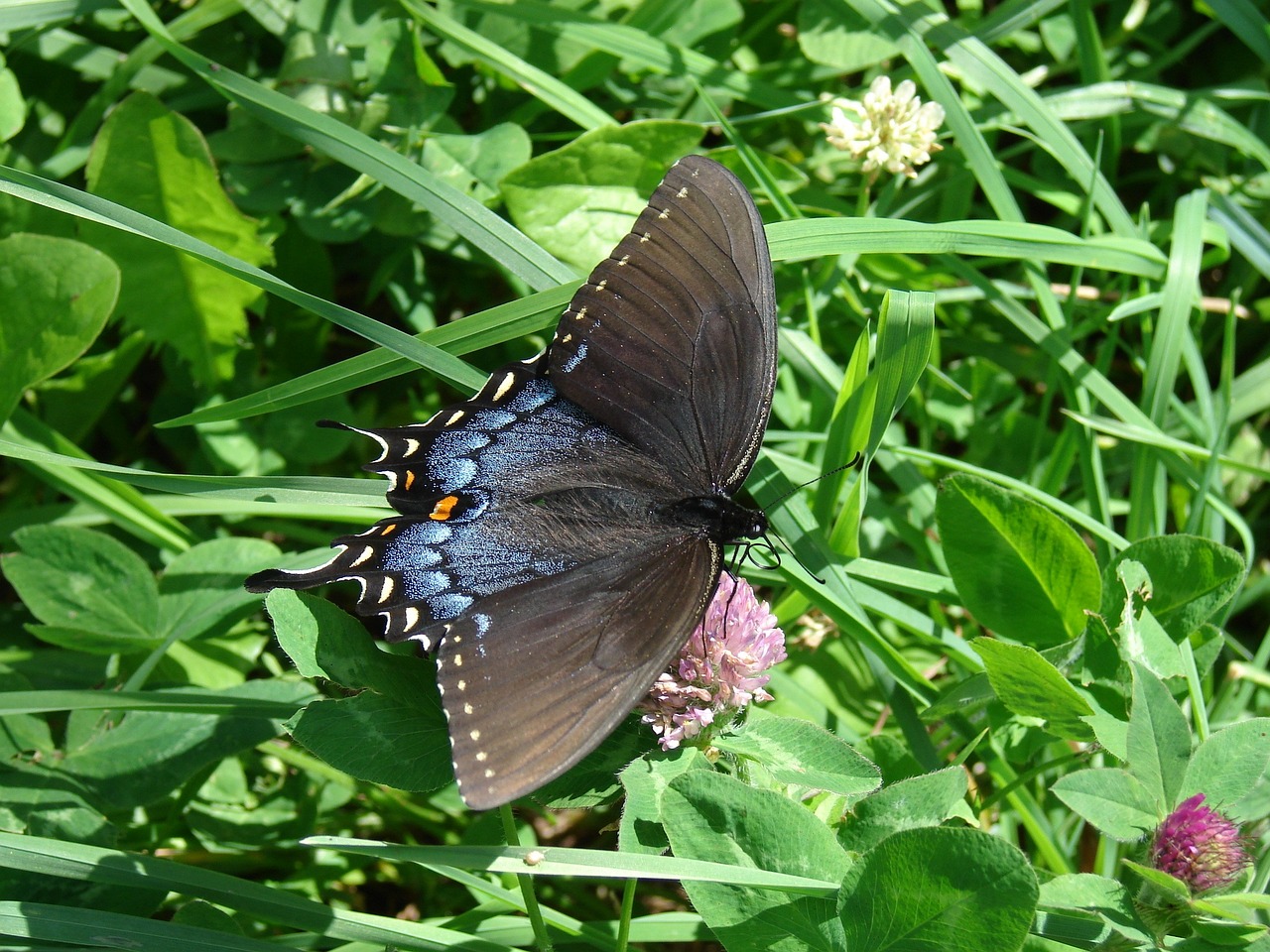
Seed Bombs
Making is an exciting and hands-on way for kids to engage with the environment while learning about the importance of biodiversity. Imagine a small, colorful ball made of clay, compost, and seeds, ready to be tossed into a garden or a vacant lot to sprout life! This fun activity not only teaches children about planting but also encourages them to think about how they can positively impact their surroundings. By creating seed bombs, kids develop a practical understanding of how plants grow and the role they play in our ecosystem.
The process of making seed bombs is simple and enjoyable, making it perfect for kids of all ages. To start, gather the following materials:
- Seeds (native flowers or vegetables work best)
- Clay powder
- Compost or potting soil
- Water
Once you have your materials, the fun begins! Mix equal parts of clay powder and compost in a bowl. Gradually add water until the mixture is moldable but not too wet. Then, let the kids add their chosen seeds to the mix. This is a fantastic opportunity to talk about the different types of plants and their benefits to the environment. After everything is combined, roll the mixture into small balls, about the size of a marble. These seed bombs can be left to dry for a day or two. Once dried, they are ready to be thrown into a garden, park, or any bare patch of soil where they can grow!
Not only do seed bombs serve as a fun craft, but they also promote environmental stewardship. Kids learn that they can help restore habitats and support local wildlife simply by planting seeds. This activity can spark discussions about the importance of native plants and how they provide food and shelter for various species.
Moreover, you can turn this into a group project, encouraging teamwork and collaboration among children. They can share their ideas on where to plant the seed bombs, creating a sense of community and responsibility towards their environment. By the end of the day, they won’t just have a handful of seed bombs; they will have gained a deeper appreciation for nature and the role they play in preserving it.
Q: What types of seeds should we use for seed bombs?
A: It’s best to use native seeds that are well-suited for your local environment. Native plants are adapted to the local climate and soil conditions, making them more likely to thrive.
Q: Can we make seed bombs indoors?
A: Yes, you can make seed bombs indoors as long as you have a suitable workspace. Just be sure to let them dry in a well-ventilated area.
Q: How long do seed bombs last before they need to be planted?
A: Seed bombs can last for several months if stored in a cool, dry place. However, for the best results, it's recommended to plant them within a few months.
Q: Will seed bombs harm the environment?
A: When made with native seeds and placed in appropriate locations, seed bombs can enhance local ecosystems. However, avoid using invasive species, as they can disrupt local habitats.
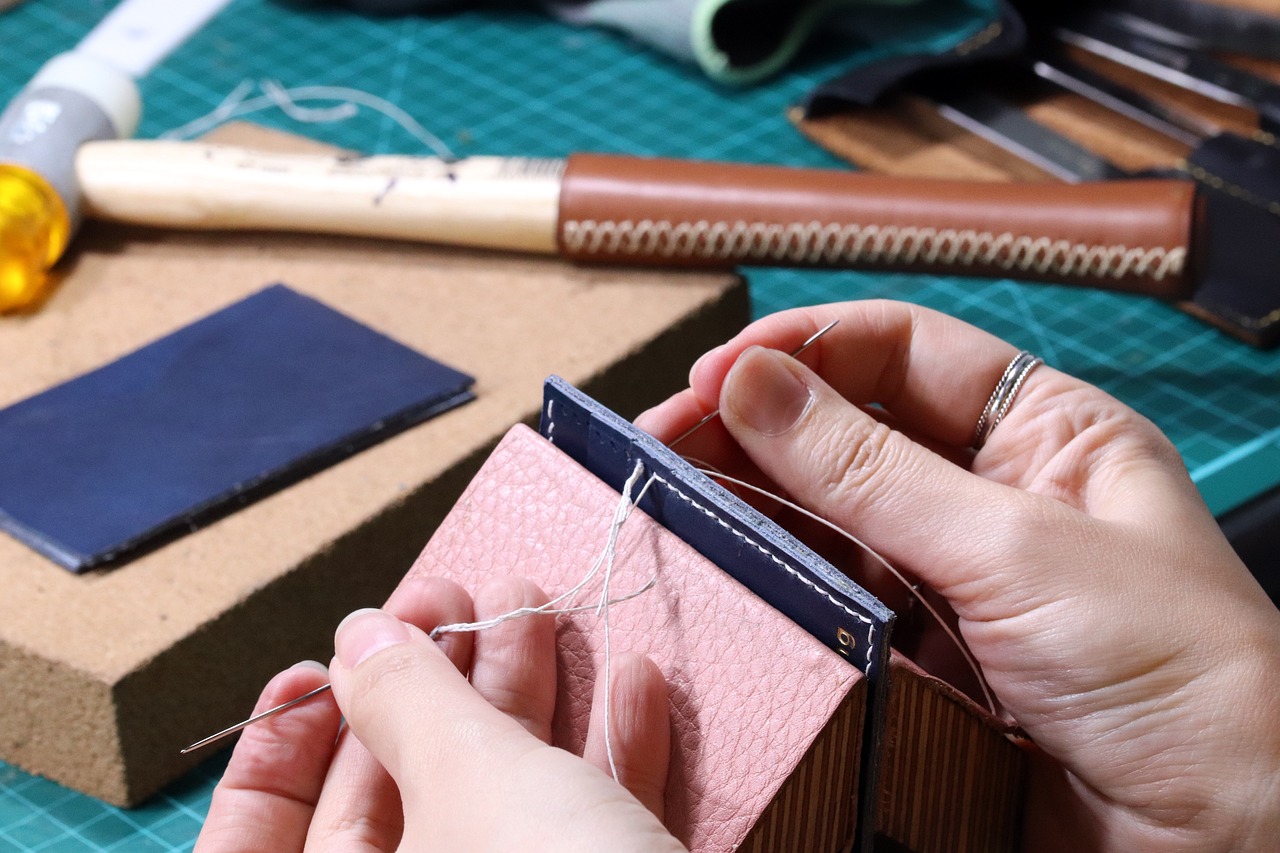
Upcycled Planters
Creating is not just a fun craft; it's a fantastic way to teach kids about sustainability and the beauty of repurposing. Imagine transforming an old plastic bottle or a worn-out shoe into a vibrant home for plants! This activity encourages children to think creatively about waste and how they can make a positive impact on the environment. By using items that would typically end up in the trash, kids learn that even the most mundane objects can serve a new purpose. It's like giving a second life to something that was once considered useless.
As children embark on this crafting journey, they can explore various materials to create their planters. Here are some popular items they can use:
- Old jars or containers
- Plastic bottles
- Old shoes or boots
- Wooden crates
Each of these items provides a unique canvas for creativity. For instance, an old boot can be painted and filled with soil, making it a quirky addition to any garden. Kids can let their imaginations run wild, painting, decorating, and personalizing their planters with colors and designs that reflect their personalities. This not only fosters creativity but also instills a sense of ownership over their projects, as they will be caring for the plants they choose to grow.
Moreover, while creating these upcycled planters, it's an excellent opportunity to introduce children to the basics of gardening. They can learn about different types of plants suitable for their planters, such as herbs, flowers, or succulents. Each plant has its own unique requirements, and understanding these needs can help children develop a deeper respect for nature. For example, they will discover that some plants thrive in sunlight while others prefer shade, teaching them about the diverse ecosystems that exist in our world.
To ensure that the plants flourish, kids can also be taught the fundamental aspects of plant care. This includes watering schedules, sunlight requirements, and the importance of using quality soil. By engaging in these practices, children will not only learn responsibility but also develop a connection to the living things they are nurturing. It's like raising a pet, but instead, they are cultivating life through plants, which can be incredibly rewarding.
Incorporating this craft into Earth Day celebrations or school projects can significantly enhance children's understanding of environmental stewardship. They will see firsthand how small actions, like repurposing items and caring for plants, can contribute to a healthier planet. So, the next time you’re about to toss something away, think about how it could become a beautiful planter in the hands of a child!
| Question | Answer |
|---|---|
| What materials can be used for upcycled planters? | You can use a variety of materials such as old jars, plastic bottles, shoes, and wooden crates. |
| How do I help my child care for their plants? | Teach them about watering needs, sunlight requirements, and the importance of using good soil. |
| Can upcycled planters be decorative? | Absolutely! Kids can paint and decorate their planters to reflect their personal style. |
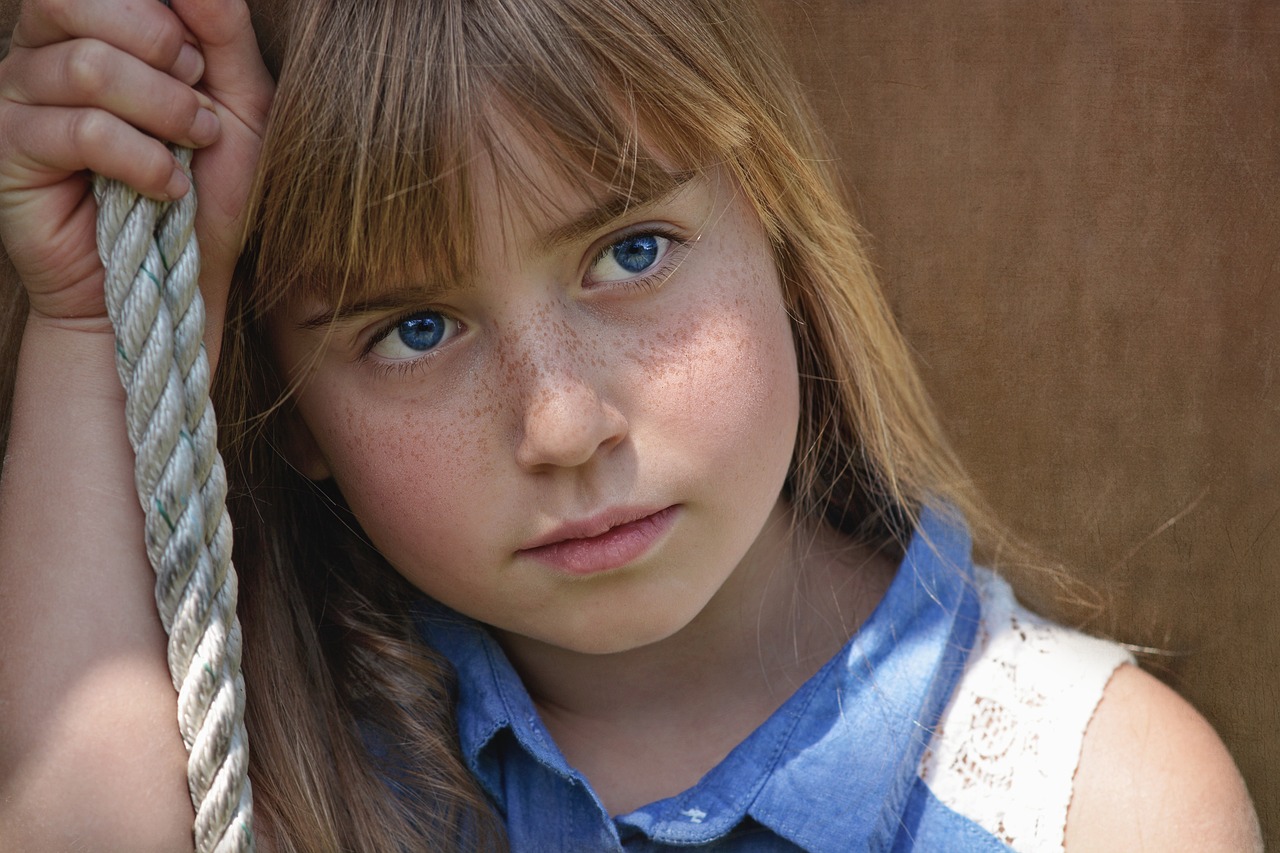
Decorating Planters
Decorating upcycled planters is more than just a fun activity; it's an opportunity for kids to express their creativity while learning about the vital role plants play in our ecosystem. Imagine transforming an old yogurt cup or a worn-out shoe into a vibrant home for a plant! This hands-on project not only fosters artistic skills but also instills a sense of ownership and responsibility for their green creations. Kids can use a variety of materials to personalize their planters, such as paint, markers, stickers, and natural elements like twigs or stones.
One of the most exciting aspects of this craft is the freedom it offers. Children can let their imagination run wild! They might choose to create a themed planter, such as a "jungle" planter adorned with animal stickers, or a "fairy garden" featuring tiny decorations. This encourages them to think about how their artistic choices reflect their personality and interests. Moreover, as they engage in this creative process, they also learn about the importance of repurposing materials, which aligns perfectly with the Earth Day ethos of sustainability.
As they decorate, children can also discuss the various plants they will be growing in their planters. This conversation can lead to questions like: What do plants need to thrive? or How do plants help our environment? Such discussions deepen their understanding of the interconnectedness of nature and the importance of caring for it.
To make the process even more engaging, you can create a planter decoration station with all the necessary supplies. Here’s a simple setup you might consider:
| Supplies | Purpose |
|---|---|
| Paints and Brushes | For adding color and designs to the planters. |
| Stickers | To personalize and add fun elements. |
| Natural Materials | To connect with nature and enhance creativity. |
| Markers | For detailed drawings and messages. |
Once the planters are decorated, kids can plant their chosen seeds or seedlings. This step not only solidifies their connection to their creations but also teaches them about the growth process and the care required for plants to flourish. By nurturing their plants, they learn responsibility and the rewards of patience, as they watch their efforts bloom into life.
Ultimately, decorating planters is a multifaceted activity that blends art, education, and environmental stewardship. It’s a fantastic way for kids to celebrate Earth Day, making it a memorable experience that they will cherish while also learning valuable lessons about the world around them.
- What materials can we use to decorate planters? You can use paints, markers, stickers, natural elements like stones or twigs, and even recycled items such as fabric scraps or old magazines.
- How do we choose the right plants for our upcycled planters? Consider the size of the planter and the type of light available. Herbs, succulents, and small flowers are great options for beginners.
- Can we grow vegetables in our decorated planters? Absolutely! Many vegetables can thrive in containers, making them a fun and educational choice for kids.

Plant Care Basics
Teaching kids about plant care through their upcycled planters is not just a fun activity; it’s a fantastic way to instill a sense of responsibility and nurture their connection with nature. When children understand the basic needs of plants, they begin to appreciate the delicate balance of our ecosystem. Think of it as a mini science lesson wrapped in a creative project! By caring for their plants, kids learn valuable life skills that extend beyond gardening.
First and foremost, it’s essential to explain the basic needs of plants. Plants require sunlight, water, soil, and air to thrive. You can create a simple table to illustrate these needs:
| Plant Needs | Description |
|---|---|
| Sunlight | Most plants need at least 6 hours of sunlight daily to grow healthy and strong. |
| Water | Plants need water to absorb nutrients from the soil. Overwatering can be just as harmful as underwatering. |
| Soil | Good quality soil provides the necessary nutrients and support for plants. |
| Air | Plants need air, particularly carbon dioxide, for photosynthesis, which is how they make their food. |
Once the kids understand these basics, it’s time to dive into the hands-on experience. Start by showing them how to water their plants properly. Explain that each plant has different watering needs, and it's important to check the soil moisture before watering. You might say, “Just like we don’t want to drink too much water at once, plants feel the same way!” This analogy can help them grasp the concept of moderation.
Next, discuss the significance of sunlight. Encourage kids to observe how their plants respond to light and to rotate their planters if they notice some plants leaning towards the sun. This simple action teaches them about the natural growth patterns of plants and the importance of sunlight in their development.
Additionally, you can introduce the concept of fertilizing. Explain that just as we need food to grow, plants benefit from nutrients in the soil. You can use organic fertilizers, which are safe for kids to handle, and show them how to apply it in moderation. This can lead to discussions about different types of fertilizers and their roles in plant health.
Finally, encourage kids to keep a plant journal. This can be a fun way for them to track their plant's growth and changes over time. They can jot down observations, draw pictures of their plants, and even note when they watered or fertilized them. This practice not only reinforces their learning but also fosters a sense of accomplishment as they watch their plants thrive.
In conclusion, teaching kids about plant care through their upcycled planters is a rewarding experience that cultivates responsibility, creativity, and environmental awareness. As they nurture their plants, they also nurture a greater understanding of the world around them. So, roll up those sleeves, dig in the dirt, and let the gardening adventures begin!
- What type of plants are best for kids to grow?
Start with easy-to-care-for plants like succulents, beans, or herbs. They grow quickly and are low maintenance! - How often should kids water their plants?
It depends on the plant! Teach them to check the soil moisture before watering. - Can kids decorate their planters?
Absolutely! Decorating planters can make the gardening experience more personal and fun.
Frequently Asked Questions
- What age group is suitable for these Earth Day crafts?
These crafts are designed for children aged 5 to 12 years. However, younger kids can also participate with adult supervision, making it a fun family activity!
- What materials do I need for recycled art projects?
You can use a variety of materials such as cardboard boxes, plastic bottles, old magazines, and any other items that are typically thrown away. The idea is to get creative and see how you can transform waste into art!
- How can I encourage my child to explore nature while making collages?
Take your child on a nature walk to collect leaves, flowers, and other natural materials. Encourage them to observe their surroundings and pick items that catch their eye. This not only enhances their creativity but also fosters a love for nature!
- What are seed bombs, and how do they help the environment?
Seed bombs are small balls made of seeds, clay, and compost that can be thrown into areas that need greenery. They help in promoting biodiversity by allowing plants to grow in places where they might not otherwise thrive.
- Can I use any container for upcycled planters?
Absolutely! You can use old jars, plastic containers, or even tin cans. Just make sure to add drainage holes at the bottom to help prevent overwatering!
- How can I teach my child to care for their plants?
Start by showing them how to water their plants properly, explain the importance of sunlight, and teach them about the different needs of various plants. Make it a routine to check on the plants together!
- Are these activities safe for kids?
Yes, these activities are generally safe! Just ensure that any tools or materials used are age-appropriate and that adult supervision is provided when necessary, especially with items like scissors or paints.



















